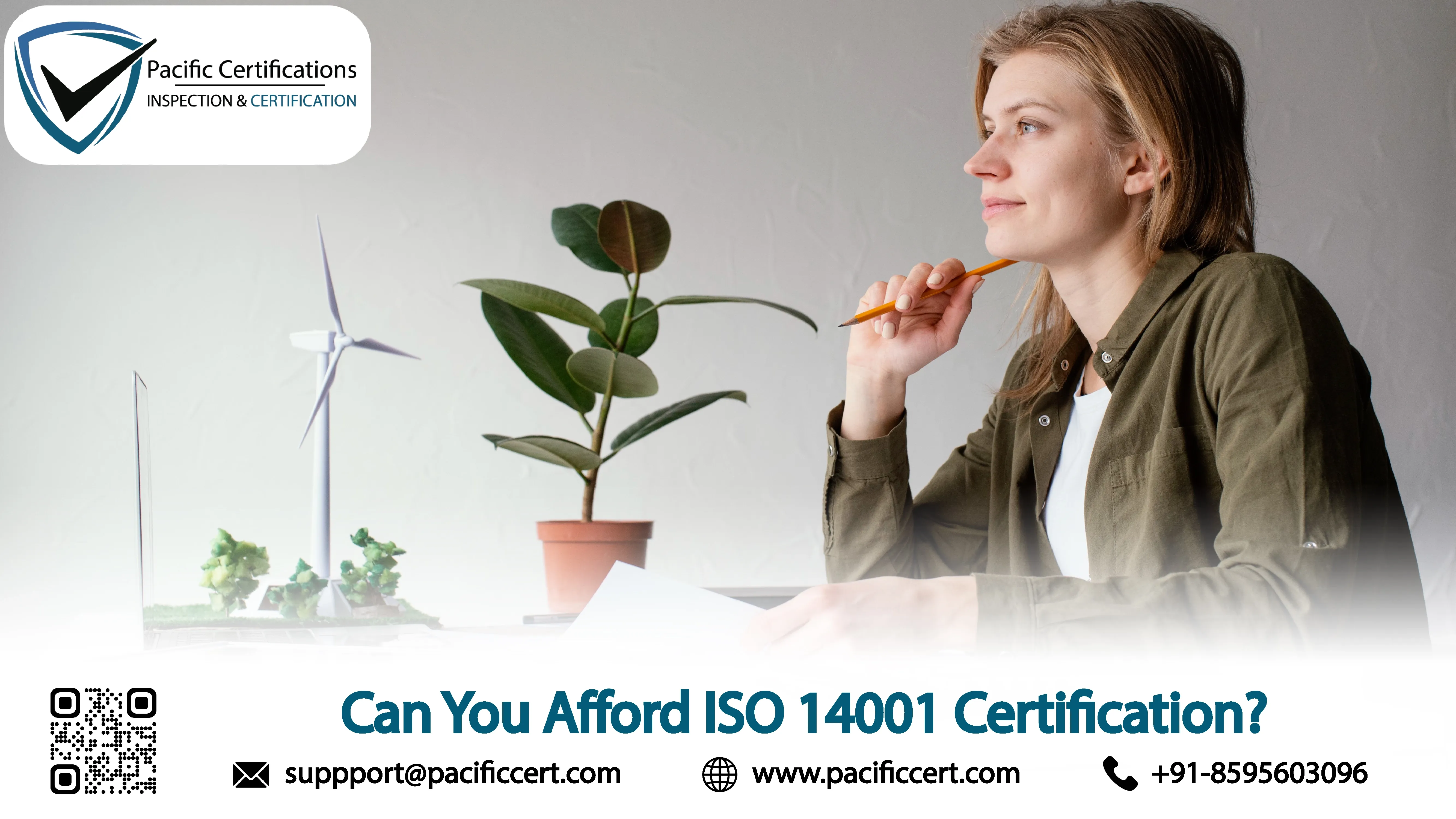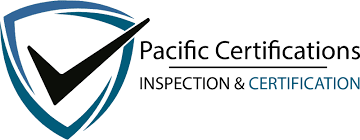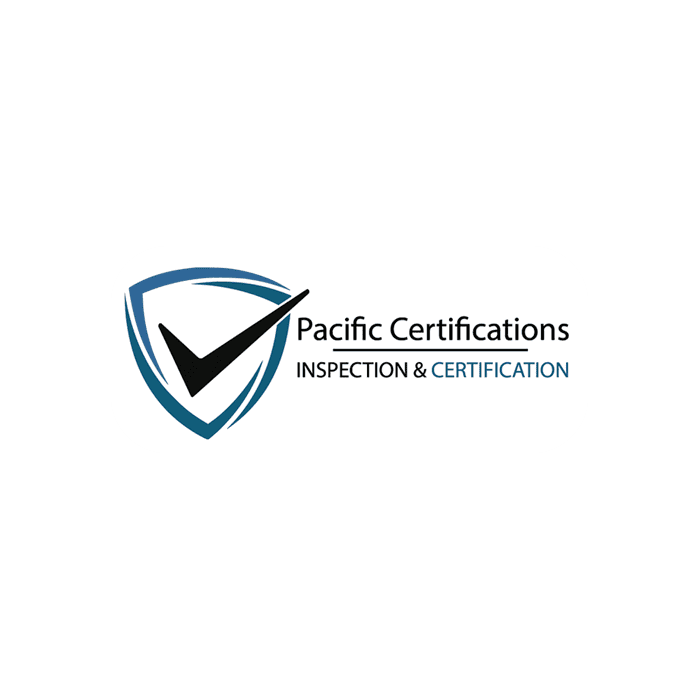Can You Afford ISO 14001 Certification for Environmental Management?

Introduction
As sustainability becomes a key business requirement, ISO 14001 certification is increasingly viewed as a critical investment rather than an expense. Whether you operate a manufacturing plant, construction company, logistics network, or service facility, environmental performance now directly affects competitiveness, reputation and compliance.
ISO 14001 helps organizations establish an Environmental Management System (EMS) that reduces waste, lowers emissions and improves resource efficiency. But many businesses still ask one question — can we afford certification? The real question, however, is whether you can afford not to implement it, as non-compliance and environmental inefficiency often cost far more than certification itself.
Schedule a discussion with Pacific Certifications to assess your readiness and understand how ISO 14001 can strengthen your environmental strategy.
Quick summary
ISO 14001 certification provides a globally recognized framework for managing environmental responsibilities. It focuses on controlling resource use, minimizing pollution and ensuring compliance with environmental laws. Organizations that adopt ISO 14001 often experience measurable cost savings through waste reduction, energy optimization and improved process efficiency outcomes that quickly offset the cost of certification.
Why ISO 14001 certification matters for organizations?
In a market where sustainability drives purchasing decisions, ISO 14001 certification has become an expectation rather than an option. It demonstrates environmental accountability, strengthens trust with stakeholders and supports compliance with regulatory frameworks such as EPA standards or EU environmental directives.
Beyond compliance, it also provides a competitive advantage, certified organizations are preferred in government tenders, export supply chains and partnerships with environmentally conscious clients.
“ISO 14001 transforms sustainability from a compliance checklist into a performance-driven system that minimizes environmental impact while generating long-term operational savings.”
What are the requirements for ISO 14001 certification?
To achieve ISO 14001 certification, organizations must establish a structured Environmental Management System (EMS) that covers all processes impacting the environment. Below are the key requirements to prepare for certification:

- Define the scope of the EMS, including facilities, operations and activities that affect the environment.
- Identify environmental aspects and impacts such as energy use, waste generation and emissions.
- Establish an environmental policy aligned with the organization’s strategic goals.
- Conduct risk and opportunity assessments related to environmental performance.
- Set measurable objectives and targets for pollution prevention, waste management and resource efficiency.
- Maintain legal compliance registers for environmental laws and regulations.
- Develop operational controls for waste segregation, energy management and chemical handling.
- Train personnel on environmental awareness, roles and responsibilities.
- Conduct internal audits and management reviews to ensure continual improvement.
- Prepare for Stage 1 and Stage 2 audits with an accredited certification body.
Tip:Start with a baseline environmental audit to identify resource inefficiencies, this helps you estimate potential savings and justify certification as a value-generating investment rather than a cost.
How to prepare for certification?
Implementing ISO 14001 requires planning and consistent execution across all levels of the organization. Below are the key steps:
1. Conduct a gap analysis to compare existing practices with ISO 14001 requirements.
2. Develop environmental objectives with realistic timelines and measurable outcomes.
3. Document procedures for energy use, waste control and emergency response.
4. Train staff and communicate the purpose of the EMS across departments.
5. Implement monitoring systems for emissions, waste and utility usage.
6. Schedule internal audits and management reviews to track progress.
7. Address nonconformities and finalize records before certification.
Certification audit
Stage 1 audit: Evaluates your organization’s readiness, policies and documentation.
Stage 2 audit: Assesses actual implementation of environmental controls and performance.
Nonconformities: Identified issues must be corrected before certification approval.
Management review: Confirms leadership accountability and commitment to continual improvement.
Final certification: Awarded after successful audit completion.
Surveillance audits: Conducted annually to verify compliance.
Recertification audits: Occur every three years to maintain validity.
What are the benefits of ISO 14001 certification?
Implementing ISO 14001 brings both environmental and financial returns. Below are the key benefits:

- Reduced waste and lower operational costs through optimized resource use.
- Improved compliance with environmental laws and reduced risk of penalties.
- Stronger corporate image and stakeholder confidence.
- Increased access to international markets and eco-conscious clients.
- Better energy management and carbon footprint reduction.
- Enhanced employee awareness and environmental responsibility.
- Integration opportunities with ISO 9001 and ISO 45001 systems.
- Streamlined audits and reporting under ESG and sustainability frameworks.
- Measurable KPIs such as waste reduction percentage, energy efficiency improvement and emission cuts.
- Long-term resilience through proactive environmental risk management.
Market Trends
In recent years, ISO 14001 adoption continues to rise globally as sustainability becomes part of corporate performance metrics. Industries are using real-time monitoring tools and digital EMS platforms to track emissions, waste and energy consumption. ESG-linked funding and supplier qualification programs now require certified systems, encouraging SMEs to adopt ISO 14001 for competitive advantage.
By 2030, organizations with ISO 14001 certification will be central to the global low-carbon transition. Certification will play a key role in achieving net-zero targets and circular economy goals. Automation, AI-driven sustainability dashboards and carbon accounting will be integral to environmental management systems. Companies investing in ISO 14001 today are expected to achieve long-term cost savings through operational efficiency and enhanced investor trust.
Training and courses
Pacific Certifications provides accredited training programs for ISO 14001, helping professionals and organizations develop the skills needed to implement and maintain an Environmental Management System effectively:
· Lead Auditor Training: For professionals conducting internal or external audits under ISO 14001. The program covers audit planning, environmental aspect evaluation and performance verification aligned with ISO 19011.
· Lead Implementer Training: Designed for managers and sustainability officers responsible for establishing or improving EMS processes. The course focuses on policy development, legal compliance, performance monitoring and continual improvement.
Contact [email protected] to schedule ISO 14001 training or awareness sessions and strengthen your environmental performance system.
How Pacific Certifications can help?
Pacific Certifications provides accredited ISO 14001 certification services to organizations across industries. Our audits help institutions manage environmental performance, improve compliance and build stakeholder confidence. We focus solely on impartial audit and certification, not consultancy, ensuring transparency and credibility.
Request your ISO audit plan and fee estimate. We will help you map Stage-1/Stage-2 timelines and evidence requirements for your organization. Contact us at [email protected] or visit www.pacificcert.com.
Ready to get ISO 14001:2015 certified?
Contact Pacific Certifications to begin your certification journey today!
Author: Alina Ansari
Suggested Certifications –
Read more: Pacific Blogs

